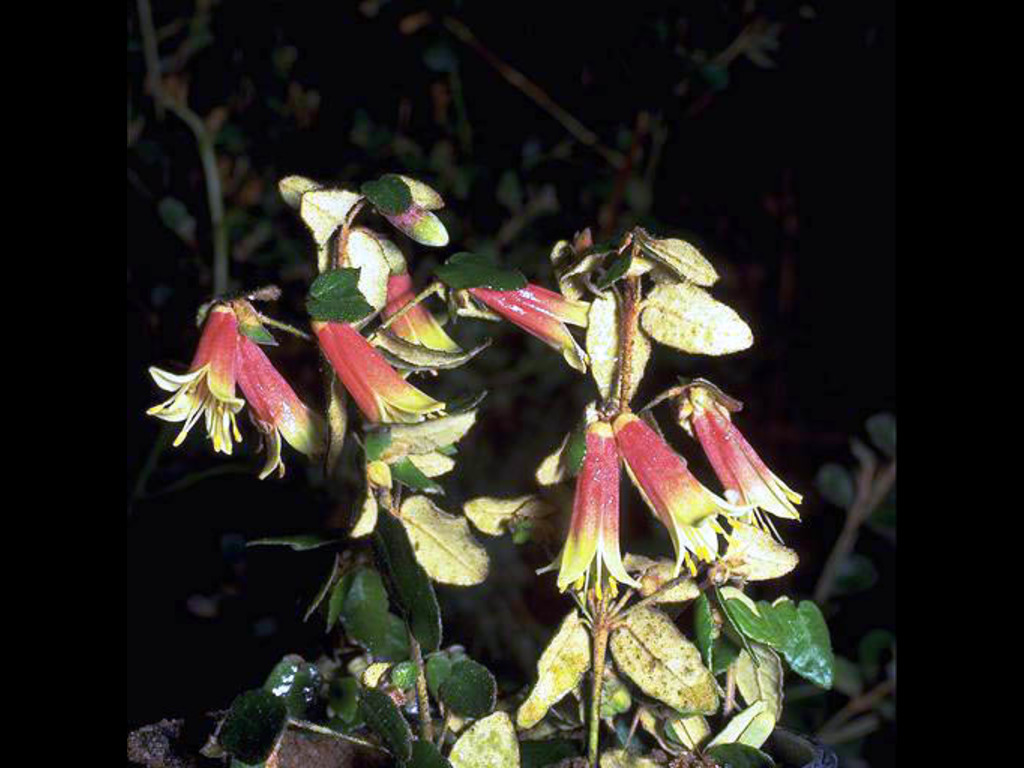Correa reflexa var. reflexa 'Dawn Glow'
- File Number
- 764
- ACRA Field Book Number
- 734
- Registration Date
- 01/09/1999
- Application Received
- 17/06/1999
- Family
- Rutaceae
- Cultivar Name
- Correa reflexa var. reflexa 'Dawn Glow'
- Origin
- This is a 1997 selection, by Mrs Cherree Densley, Killarney (Victoria) from a population of C. reflexa growing on heathland at Bald Hill, Portland, Victoria. The name refers to the area found and the flower colour..
- Characteristics
- Note: Received as Correa 'Portland Dawn Glow' Prostrate shrub to ca. 20 cm x 1.5 - 2 m with a moderately dense habit. Branchlets highly tomentose with rust-coloured stellate hairs becoming brown and glabrous with age with occasional clusters of short stellate hairs. Simple cordate leaves, 20 -30 mm x 12 -18 mm, shortly petiolate. Leaf apices obtuse, leaf bases cordate, venation reticulate, margins with rust-coloured stellate hairs. Upper surfaces of mature leaves dark green and scabridulous with occasional stellate hairs. Upper surfaces of young leaves minutely densely tomentose with white stellate hairs and occasional rust-coloured stellate hairs, becoming more concentrated at margins. Lower surfaces minutely densely tomentose with white stellate hairs and scattered rust-coloured stellate hairs becoming more concentrated on the veins. Corolla cylindrical 25mm x 10mm, dull orange-red. Peak flowering is from May to June in most districts. Diagnosis: This cultivar conforms to descriptions for C reflexa var. reflexa found naturally in the Portland area but is distinctive by its prostrate habit and unique flower colour.
- Cultivation
- This cultivar is fast growing in cultivation. It is frost and drought hardy and has a moderately dense growth habit with prostrate branches. The tubular orange-red flowers, which appear in late autumn, are an attractive feature of the plant. It is easy to grow from cuttings and is bird attractive. This form would be suited to most garden conditions but grows best in a sunny position. It is lime tolerant and responds favourably to light pruning. It would suit embankments and rockeries as well as foreground planting in garden beds.
- Publication
- Payne, W.H. (2001), Correa Cultivars. Australian Plants 21(169): 190
- Colour Coding
- RHS Colour Chart 1995 Flower: 48A to 160B at tips Leaf upper: 139A Leaf lower: close to 195B
- Propagation
- Cuttings from semi-firm new growth
- Applicant Name
- Ms Cherree Densley on behalf of the Correa Study Group.Received by ACRA 17th June, 1999.
- Uses
- As part of a mass planting or mixed in a shrubbery, or as a feature plant. Attracts nectar feeding birds.
- Availability
- Specialist native plant nurseries
- ANBG Accession Numbers
- ACC 764, ACRA 734, CBG9914015
- NSL ID
- -

